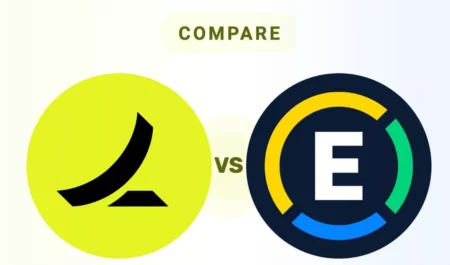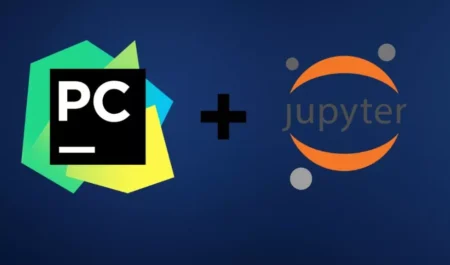49
It is important for businesses of all kinds to have a good cost management system in place in today’s fast-paced business world. After comparing Certify and Concur, I found that both systems have a number of features that are meant to make tracking expenses, reporting them, and getting reimbursed easier.
For small to medium-sized businesses looking for a basic cost management solution, I highly suggest Certify because of how easy it is to use and how well it works with other programmes. Concur, on the other hand, is better for bigger companies because it has more advanced analysis tools and a lot of different useful features. You can choose the platform that fits your needs and your budget the best, while also taking into account what your company needs.
Comparison Table
This part will show a full comparison table showing the main similarities and differences between Certify and Concur. Businesses can use this table to quickly see the pros and cons of each platform, which will help them make decisions that are best for their needs.
| Feature | Certify | Concur |
|---|---|---|
| Target User | Mid-sized Businesses 🏢 | Large Enterprises 🏢🏢🏢 |
| User Interface | Simpler, more intuitive 😊 | More complex, feature-rich 🚀 |
| Key Strength | Ease of use, cost-effectiveness 💰 | Advanced features, integrations 🌐 |
| Mobile App | User-friendly, receipt capture 📱 | Comprehensive functionality 📊 |
| Visit website | Visit website |
User Experience and Interface Design
By using Certify, I’ve found that its user interface is easy to understand and get around. This makes it very simple for people like me to keep track of our spending, send receipts, and make reports. Our users have a better experience with this simple design, and we can better keep track of our spending.
Concur, on the other hand, has a modern user experience that lets you make a lot of changes. For example, businesses can change the platform to fit their needs. This could mean setting up approval processes, setting up expense policies, or making sure that the platform works well with other systems. This makes it possible for Concur users to change the platform to fit their own needs. This makes it suitable for a wide range of businesses and industries.
Features and Capabilities Comparison
I think that Certify really shines when it comes to how well it enforces policies and how well it makes advanced reports. Cost rules are closely followed in these parts, which also give a full picture of how money is spent. With Certify, I can customise data, keep an eye on spending compared to budgets, and get a better look at spending trends. There are also features in Certify that help us keep a tight grip on expenses by setting rules and instructions for how to file, approve, and get reimbursed for costs.
But Concur’s strong data and AI-driven insights really stand out. Machine learning techniques are used by Concur to look at a lot of data and figure out how people spend their money, how they move, and where they can save money. And Concur’s predictive analytics can help us find ways to save money, get better deals from providers, and streamline the way we handle expenses.
Integrations with Accounting Software
In my experience with Certify, I have discovered that it interfaces without any difficulty with the most prominent accounting software solutions in the business, including QuickBooks, Xero, NetSuite, and SAP. Because of this, data synchronisation may be accomplished with ease, and reconciliation procedures can be simplified. This integration not only improves productivity but also guarantees accuracy in financial reporting and compliance with regulations.
On the other hand, if you use Concur, you will find that it has comprehensive interfaces with a broad variety of corporate systems. Some of these systems include SAP, Oracle, Salesforce, and Microsoft Dynamics, amongst others. Businesses are able to exploit Concur’s features in a seamless manner inside their existing infrastructure thanks to this complete compatibility, which optimises workflows and maximises efficiency.
Mobile App Functionality
Real-time expenditure tracking and updates are provided to me by the mobile app that Certify provides, which enables me to manage my expenses in a timely manner while I am on the road. Because of this tool, I am able to have immediate visibility into my expenditures, which enables me to better manage my budget and make decisions.
On the other hand, the mobile app that Concur offers improves your convenience by providing capabilities like as mobile receipt capture, which enables you to digitise receipts in a timely and correct manner. Additionally, the app that Concur provides streamlines the processes that you use to submit expenditures. This makes it simpler for you to submit expenses from any location, which ultimately results in an increase in your productivity and efficiency in the workflows that are associated with expense management.
Security and Data Privacy Measures
I believe Certify really shines when it comes to making advanced reports and following through on rules. These parts pay close attention to cost rules, which also show how money is spent in full. I can change the way data looks, keep an eye on how spending matches up with budgets, and see spending trends better with Certify. Certify has features that help us keep a tight grip on costs by setting rules and guidelines for how to file, accept, and get paid back for costs.
Smart data and AI-driven insights from Concur, on the other hand, really stand out. They use machine learning to look at a lot of data and figure out where people can save money, how they spend their money, and how they move. Predictive analytics from Concur can also help us save money, get better deals from providers, and make it easier to manage our costs.
Customer Support Comparison

Certify’s customers can get help at any time, day or night, because the company gives support 24 hours a day, seven days a week. Certify also gives each customer a devoted account manager who helps them with personalised advice and support during the implementation process and afterward. This hands-on method helps me use the tools easily and solve any problems I might come across.
On the other hand, Concur gives its users a wide range of comprehensive support tools. This includes huge databases with lots of useful articles and tips, training materials to help new users get started and improve their skills, and community forums where people can talk to each other, share their experiences, and learn from each other. Concur’s support ecosystem is meant to give users self-service choices while also giving them ways to get help from experts when they need it.
Pricing Plans and Value Proposition
Compare Certify and Concur for expense management. I believe Certify is the better choice for mid-sized companies like ours that have basic expense management needs because it is less expensive. It has many features that work well for businesses this size, like easy tracking of expenses, reporting, and following of rules, without the extra complexity or higher costs that come with enterprise-level solutions.
On the other hand, Concur is made to meet the needs of bigger businesses with more complicated needs and more money to spend. It comes with a lot of features and functions that are designed to work well with big businesses. These include advanced analytics, AI-driven insights, customisable processes, and easy connections to many different business systems.
What’s the Best Platform for You?
It is essential to take into consideration the specific needs of your company when deciding between Certify and Concur as your payment processing solution. Considering that I place a high priority on sophisticated reporting and policy enforcement, I might discover that Certify is the best option for me. Concur, on the other hand, would be a better option for me if I place a high value on comprehensive analytics and insights provided by artificial intelligence.
If you like reading this and think it could help your friends and family, share it on Facebook and Twitter. Sharing something valuable enhances its likelihood of being used by others.
Certify: The Good and The Bad
Certify is a prominent expense management software with an easy-to-use interface, advanced reporting, and seamless connections with common accounting software. To give businesses a balanced assessment of Certify, we’ll discuss its pros and cons.
The Good
- Easy to use and navigate
- Affordable pricing
- Excellent customer support
The Bad
- Fewer features compared to Concur
- Limited customization options
Concur: The Good and The Bad
Strong analytics, AI-driven insights, and enterprise-grade capabilities make Concur a popular expenditure management tool. To give organisations considering Concur a complete picture, we’ll discuss its pros and downsides.
The Good
- Comprehensive feature set
- Extensive integration capabilities
- Powerful customization options
The Bad
- Steeper learning curve
- Can be expensive for smaller businesses
Questions and Answers
Can Certify and Concur handle international expenses?
It is true that both platforms are capable of managing expenses in several currencies and across international borders.
To what extent do Certify and Concur provide automated workflows for the approval of expenses?
The answer is yes; both platforms enable the customisation of approval workflows in accordance with the policies of the firm.
What are the pros and cons of using Certify and Concur for small businesses?
Both Certify and Concur provide scalable solutions that are specifically designed to meet the requirements of small enterprises.
You Might Be Interested In










Leave a Reply